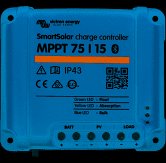- Joined
- Sep 4, 2014
- Messages
- 8,938
- Reaction score
- 6,789
where the nugget said:just read some of the comments in here re Lithium batteries and temps etc and cold charging and overheat charging and relying on the BMS and the temp sensors alone Wonders how many are running VICTRON SMART BATTERY SENSE to protect them from that happening with their mppts As sensors fail overtime or do not work depending on the battery builder see you tube for countless examples of cheaper lithium batteries where the temp protection has failed or was never there to start with .
Yeah I saw one or 2 like that last week, Those batteries I saw look like the real deal and afterwards It shot down my ideas of buying a cheaper Lithium battery altogether, Not only that but some of them were not LiFePo4 and they are the best ones to have, Unless a Lithium battery is LifePo4 you don't want it and there are many different types out there so it is easy to get stung by less than honest dealers.






